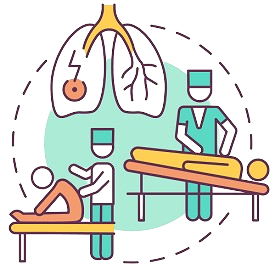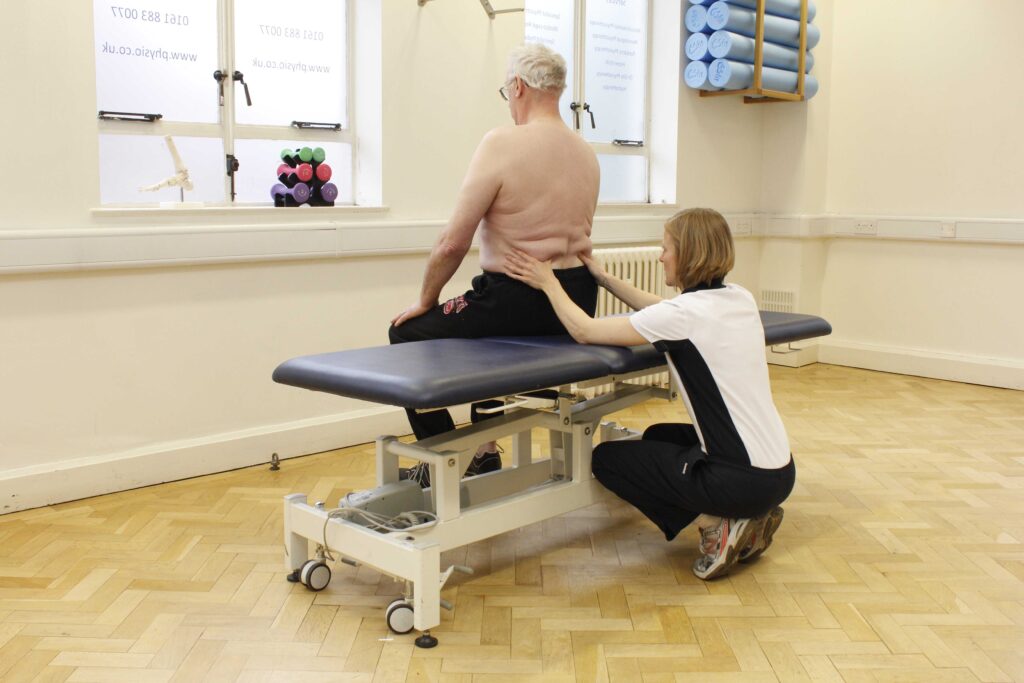Respiratory Physiotherapy

What is Respiratory Physiotherapy?
Respiratory Physiotherapy is a type of Physiotherapy used to diagnose and treat respiratory system disorders. Most approaches to Respiratory Physiotherapy employ a variety of chest clearance techniques, as well as exercises, and teach the patient rest positions to maximise the functional ability of their lungs. It aims to clear the patient’s airways and enable them to resume physical activity and exercise. (It should be noted that respiratory physiotherapy is not intended to replace medical treatment, but rather to supplement it and make it more effective.)


Why is Respiratory Physiotherapy Done?
Respiratory physiotherapy is used to treat diseases of the respiratory system. Here are some examples: … Asthma … Chronic Obstructive Pulmonary Sisease … Pneumonia … Chronic bronchitis … Emphysema … Cystic fibrosis … Inhaled foreign bodies … Neuromuscular diseases It is also beneficial for rehabilitation following major surgical procedures such as lung, heart, and liver transplants, as well as other chest operations. It should be noted that respiratory physiotherapy is not intended to replace medical treatment, but rather to supplement it and make it more effective.
Techniques used for Respiratory Physiotherapy
There are several Respiratory Physiotherapy techniques:
Thoracic Expansion Exercises: Keeping the chest and shoulders relaxed, the patient takes a long, slow breath and holds the air in for two-three seconds at the end of the breath before gently exhaling.
Provoked Cough: Normally, when mucus in the chest loosens, it causes a cough. If this does not occur, the cough can be induced by gently pressing on the windpipe in the suprasternal space when inspiration ceases.
Postural Drainage: This is the ideal and most well-tolerated method for removing mucus accumulation in the lungs. The goal is to use gravity to drain mucus into the bronchi and trachea, where it can be expelled through coughing.
Manual Techniques: In this technique, the physiotherapist applies force to the chest wall in order to clear the airways. Ex Chest percussion or clapping, vibration, or Shaking
Breathing Control: This includes periods of slow breathing, relaxation, and slowing down the breathing rate.


Care After Respiratory Physiotherapy
Respiratory Physiotherapy consists of methods that, in principle, should be completely harmless to one’s health, so no special aftercare is required
FAQ
What is respiratory physiotherapy?
Respiratory physiotherapy is a specialized form of therapy that focuses on improving lung function and breathing. It involves various techniques and exercises to help patients manage and recover from respiratory conditions.
Who can benefit from respiratory physiotherapy?
Individuals with chronic respiratory conditions such as asthma, chronic obstructive pulmonary disease (COPD), bronchitis, cystic fibrosis, and post-operative patients can benefit from respiratory physiotherapy.
What techniques are used in respiratory physiotherapy?
Common techniques include breathing exercises, chest physiotherapy, postural drainage, percussion, vibration, and the use of devices to clear mucus from the lungs.
How often should I attend respiratory physiotherapy sessions?
The frequency of sessions depends on the severity of the condition and individual needs. Your physiotherapist will provide a personalized treatment plan.
What should I expect during a respiratory physiotherapy session?
During a session, the physiotherapist will assess your condition, teach you breathing exercises, and use manual techniques to help clear your airways. They may also provide guidance on how to use respiratory devices if needed.
Are there any side effects of respiratory physiotherapy?
Respiratory physiotherapy is generally safe. However, some patients may experience temporary discomfort or increased coughing during or after sessions. Your therapist will monitor your response and adjust the treatment accordingly.
Can respiratory physiotherapy cure my respiratory condition?
While respiratory physiotherapy cannot cure chronic respiratory conditions, it can significantly improve symptoms, enhance lung function, and improve the overall quality of life.
How do I prepare for a respiratory physiotherapy session?
Wear comfortable clothing and ensure you have taken any prescribed medications. Inform your therapist of any recent changes in your health or symptoms.
Is respiratory physiotherapy covered by insurance?
Coverage varies depending on your insurance plan. It is advisable to check with your insurance provider regarding the specifics of your coverage.
How can I book an appointment for respiratory physiotherapy?
You can book an appointment by contacting our clinic directly through our website or by calling our office. Our team will assist you in scheduling a convenient time for your session.

